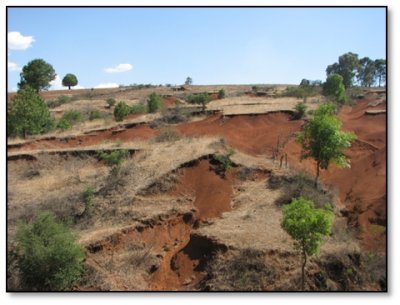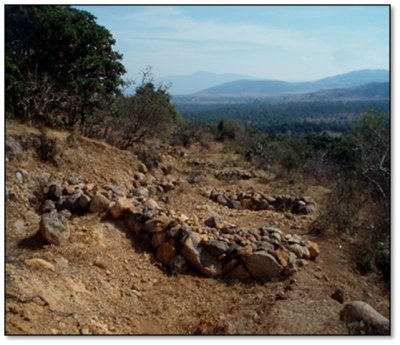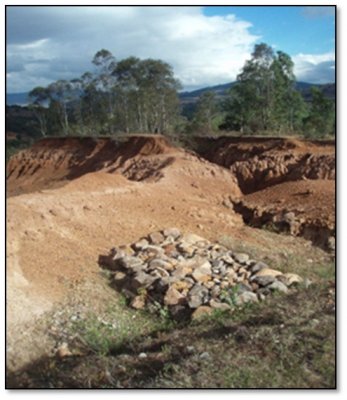| Gully control: experimental results and conclusions |
 |
|
The Cointzio basin has different kinds of soil erosion due to the type of climate (temperate semi-humid with a 6 months rainy season), soils and geomorphology as well as land uses (some mechanized farming, mainly rainfed agriculture with free grazing cattle, forest, recent avocado plantations). Apart from the land degradation, the downstream effect is the refilling of the Cointzio dam used for drinking water of the capital of Michoacán, as well as occasional severe flooding. One of the techniques tested is the gully control.
The scheme has been funded by the Mexican Ministry of Environment and Natural Resources (SEMARNAT) for 4 years. Identification and location of the stone dams constructed in the last decade in the Cointzio watershed are available in a spatial database (GIS) of SEMARNAT. Semi-quantitative evaluation of the effectiveness of stone dams to control gully erosion was carried out by measuring the volume of sediment trapped and the status of the installation as a whole.
The semi quantitative evaluation of the stone dams build to control gullies show the following resuslts.
No evaluation results were given so this analysis cannot be made.
Evaluation and effectiveness of control of gully erosion by small dams was discussed with some farmers. They are interested in soil conservation works but they consider that the dams are probably not so useful.
|
||||||||||||||||
Study sites

Acknowledgement
The DESIRE project was
|
DESIRE brought together the expertise of
26 international research institutes
and non-governmental organisations.
This website does not necessarily
represent the opinion of the
European Commission. The European
Commission is not responsible for
any use that might be made of the
information contained herein. 



